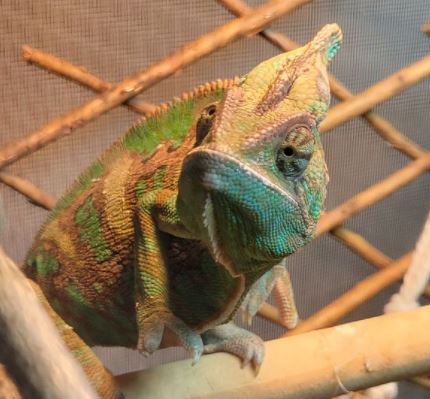How long do chameleons live
How long do chameleons live: Chameleons, those extraordinary reptilian creatures, have long captivated the imagination of both scientists and nature enthusiasts alike. With their unique ability to change colors and adapt to their surroundings, chameleons have become an emblem of mystery and wonder in the animal kingdom. In this article, we delve into the intriguing world of chameleons and explore one crucial aspect of their existence: their lifespan.
Definition and General Overview of Chameleons
Chameleons belong to the family Chamaeleonidae, a group of small to medium-sized lizards renowned for their distinctive features. These fascinating creatures are primarily found in tropical regions such as Africa, Madagascar, and some parts of Asia.
Known for their zygodactylous feet (having two toes facing forward and two backward), independently moving eyes that can rotate 180 degrees, prehensile tail, and elongated tongue used for catching prey with pinpoint accuracy – chameleons are truly exceptional reptiles. Furthermore, chameleons possess specialized skin cells called chromatophores that allow them to change color rapidly.
This extraordinary ability is not only captivating but also serves several purposes such as camouflage to blend into their environment or communicate with other individuals. The process behind this color transformation involves the expansion or contraction of pigmented cells within these chromatophores.
Fascination with Their Ability to Change Colors
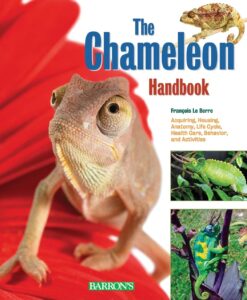 One cannot discuss chameleons without delving into the captivating phenomenon of their color-changing abilities. It is a spectacle unlike any other in the natural world – a true marvel that has enchanted people for centuries. Through an intricate combination of physiological processes involving hormones, nerve signals, light intensity, temperature changes, mood alterations (stress or aggression), and genetic factors – chameleons can transform themselves into vibrant hues or vanish entirely into their surroundings.
One cannot discuss chameleons without delving into the captivating phenomenon of their color-changing abilities. It is a spectacle unlike any other in the natural world – a true marvel that has enchanted people for centuries. Through an intricate combination of physiological processes involving hormones, nerve signals, light intensity, temperature changes, mood alterations (stress or aggression), and genetic factors – chameleons can transform themselves into vibrant hues or vanish entirely into their surroundings.
This remarkable ability serves several purposes for chameleons. Firstly, it enables them to camouflage and remain hidden from predators or sneak up on unsuspecting prey.
Secondly, it aids in thermal regulation, allowing chameleons to adjust their body temperature by absorbing or reflecting sunlight through different color variations. Additionally, color changes can also be used for territorial displays or courtship rituals among chameleon populations.
Importance of Understanding Their Lifespan
While the ability to change colors may be the most visually striking aspect of chameleons, understanding their lifespan is equally important. Lifespan refers to the length of time an organism can live under optimal conditions before succumbing to natural processes of aging or external factors such as predation or disease. By studying the lifespan of chameleons in both wild and captive settings, scientists can gain insights into various aspects of their biology, including reproductive strategies, evolutionary adaptations, habitat suitability, and responses to environmental changes.
Moreover, comprehending the lifespan of chameleons holds practical significance for those who choose to keep them as pets. Being aware of their average life expectancy ensures that proper care and husbandry practices are implemented to provide a healthy and enriched environment conducive to a longer lifespan.
As captivating as these creatures may be when brought into our homes, it is our responsibility as caretakers to ensure their well-being and longevity. In the following sections of this article, we will delve deeper into specific aspects related to the lifespan of different species of chameleons – exploring factors that influence their longevity in both wild and captive settings while also shedding light on care guidelines that can help prolong their lives.
Lifespan of Chameleons
Average lifespan in the wild and in captivity
In order to understand the lifespan of chameleons, it is crucial to examine their longevity both in their natural habitat and when kept in captivity. In the wild, chameleons generally have a more challenging existence, with various environmental factors influencing their lifespan. On average, most chameleon species have a lifespan ranging between 2 to 5 years.
However, some exceptional cases have been recorded where certain species were known to live up to 10 years or even longer. When chameleons are kept in captivity under optimal conditions, their lifespan tends to increase significantly.
The average lifespan of captive chameleons can reach up to 7 years or more. This disparity can be attributed to several factors such as access to consistent food sources and protection from predators.
Factors influencing lifespan in the wild (e.g., habitat, predators)
Chameleons living in the wild face numerous challenges that affect their overall lifespan. One significant factor is their habitat.
Chameleons are native to various regions around the world, each with its own unique climate and ecosystem. Environmental conditions play a crucial role in determining chameleon survival rates.
For instance, extreme temperatures or insufficient food availability can lead to shorter lifespans. Furthermore, natural predators also impact the longevity of chameleons in the wild.
These predators include birds of prey, snakes, small mammals, and other reptiles that consider chameleons as part of their diet. The constant risk of predation adds significant pressure on these creatures and reduces their chances of reaching an advanced age.
Factors influencing lifespan in captivity (e.g., diet, care)
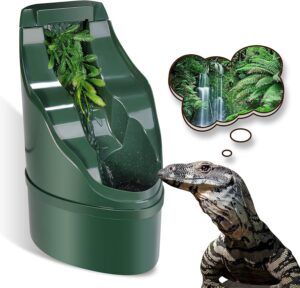 Chameleon owners who provide appropriate care for their pets can greatly influence their lifespans when compared to their wild counterparts. One crucial factor is diet.
Chameleon owners who provide appropriate care for their pets can greatly influence their lifespans when compared to their wild counterparts. One crucial factor is diet.
Chameleons require a diverse and nutritious diet, primarily consisting of live insects such as crickets, mealworms, and silkworms. A balanced and vitamin-rich diet is essential to ensure their overall health and longevity.
In addition to nutrition, proper care encompasses several aspects, including suitable enclosure conditions such as temperature, humidity levels, lighting, and access to fresh water. Maintaining optimal environmental conditions helps diminish stress levels in captive chameleons and promotes healthy growth and longer lifespans.
It is important to note that while captivity can extend the lifespan of chameleons due to controlled environmental factors and provision of consistent food sources, it cannot replicate the complexity of their natural habitat entirely. Thus, even with optimal care in captivity, chameleon lifespans may still be slightly shorter compared to those living freely in the wild.
Species Variations in Lifespan
An Overview of Different Chameleon Species and Their Lifespans
Chameleons, with their remarkable ability to change colors and their distinct physical features, comprise a diverse group of reptiles. However, when it comes to their lifespans, significant variations exist among different chameleon species.
Understanding these divergences is crucial for chameleon enthusiasts and caretakers alike. Let’s delve into the lifespans of some notable chameleon species and explore the factors that influence their longevity.
Veiled Chameleon (Chamaeleo calyptratus)
The Veiled Chameleon, scientifically known as Chamaeleo calyptratus, is a popular species among chameleon enthusiasts due to its striking appearance and adaptability. In terms of lifespan, Veiled Chameleons typically live between 5 to 7 years in captivity but may have shorter lifespans in the wild. Environmental factors play a significant role in determining their longevity.
For instance, temperature fluctuations impact their overall health and survival rates. These chameleons thrive when exposed to temperatures ranging from 70°F to 85°F during the day, while at night they prefer cooler temperatures around 60°F to 70°F.
Humidity levels are equally important as Veiled Chameleons require moderate humidity (around 50-70%) but should also have access to dry areas for thermoregulation. Maintaining optimal temperature and humidity conditions within their habitats promotes better overall health and prolongs their lifespan.
Panther Chameleon (Furcifer pardalis)
The Panther Chameleon (Furcifer pardalis) is renowned for its vibrant coloration and large size compared to other chameleon species. As far as lifespans go, Panther Chameleons typically live between 5 to 7 years in captivity, with some individuals even surpassing a decade.
Unique characteristics of Panther Chameleons can influence their lifespan. Their impressive size and coloration are believed to be linked to better overall health and resilience to environmental stressors.
Additionally, these chameleons possess prehensile tails that aid in balance and stability while moving through their arboreal habitats. This adaptation contributes to their longevity by reducing the risk of accidental falls or injuries.
Jackson’s Chameleon (Trioceros jacksonii)
Jackson’s Chameleon (Trioceros jacksonii), native to East Africa, is another enchanting chameleon species known for its three horn-like projections on its head. When it comes to lifespans, Jackson’s Chameleons typically live between 5 to 10 years in captivity, with some individuals reaching up to 15 years or more.
In addition to genetic factors, the behavior of Jackson’s Chameleons significantly influences their survival rates and longevity. These chameleons exhibit unique hunting behaviors such as shooting out their tongues with remarkable accuracy and speed when targeting prey, enabling them to secure sustenance efficiently.
This efficient hunting behavior contributes positively towards maintaining sufficient energy levels required for optimal health and a longer lifespan. Understanding the distinct lifespans of various chameleon species allows us to appreciate the diversity within this reptilian group while providing insights into factors influencing their longevity.
Whether it is the Veiled Chameleon adapting well under controlled temperature and humidity conditions, the Panther Chameleon benefitting from its size and coloration advantages, or Jackson’s Chameleon displaying efficient hunting behaviors contributing towards an extended life; each species presents fascinating aspects that shape its lifespan potential. By considering these elements when caring for chameleons as captives or studying them in their natural habitats, we can ensure a happier existence for these remarkable creatures.
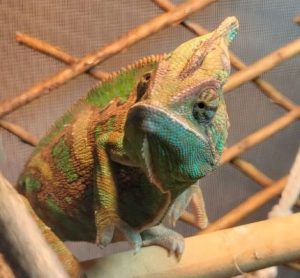
Factors Influencing Chameleon Longevity
Genetic factors – Unraveling the Lifespan Potential
Chameleon longevity is intrinsically linked to genetic factors that govern their lifespan potential. While it is difficult to pinpoint the exact genes responsible, research suggests that certain genetic traits play a role in determining how long chameleons can live.
These genetic factors encompass various aspects, including physiological processes, immune systems, and overall health. It is believed that chameleons with stronger genetics have a greater potential for a longer lifespan.
However, genetic diversity within chameleon populations is crucial for maintaining overall health and resilience. Inbreeding, which occurs when individuals with closely related genetics reproduce, can lead to a decline in vitality and increased susceptibility to diseases.
Inbreeding depression can manifest as reduced fertility rates or weakened immune systems in offspring, ultimately decreasing their chances of survival and longevity. Therefore, breeding programs aimed at preserving chameleon species must consider the importance of maintaining genetic diversity to ensure healthy populations with extended lifespans.
Environmental Factors – The Crucial Connection between Habitat Quality and Survival Rates
How long do chameleons live: The environment plays a pivotal role in shaping the lifespan of chameleons. Habitat quality directly impacts resource availability such as food sources, water accessibility, and suitable nesting sites necessary for successful reproduction and overall well-being. Chameleons living in pristine habitats with ample resources tend to experience better health conditions and are more likely to reach their maximum lifespan potential.
Conversely, habitat degradation due to deforestation or urbanization has profound negative implications for chameleon populations. When essential resources become scarce or compromised by human activities such as pollution or habitat fragmentation; it places significant stress on these creatures leading to reduced survival rates as well as shortened lifespans.
The Threat of Climate Change on Chameleon Populations – A Ticking Time Bomb
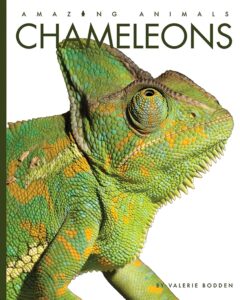 Climate change poses an imminent threat to chameleon populations and their longevity. The rise in global temperatures, altered precipitation patterns, and increased frequency of extreme weather events have a direct impact on chameleons’ natural habitats.
Climate change poses an imminent threat to chameleon populations and their longevity. The rise in global temperatures, altered precipitation patterns, and increased frequency of extreme weather events have a direct impact on chameleons’ natural habitats.
These changes can disrupt the delicate balance of ecosystems they rely on for survival. Chameleons are ectothermic creatures, meaning they rely on external heat sources to regulate their body temperature.
With changing climatic conditions, their ability to thermoregulate may be compromised, leading to reduced fitness and survival rates. Furthermore, shifts in rainfall patterns can affect food availability and reproductive cycles, further challenging chameleon populations already struggling with the effects of climate change.
While genetic factors influence the inherent lifespan potential of chameleons and genetic diversity is crucial for long-term population health; environmental factors such as habitat quality and climate change have profound implications for their survival rates and overall longevity. Protecting the natural habitats of these remarkable creatures is not only essential for their well-being but also vital for ensuring that future generations can continue to marvel at the enigmatic beauty of these color-changing wonders we call chameleons.
Care Guidelines for Prolonging Chameleon Life Expectancy
Proper Nutrition
Ensuring proper nutrition is essential for maintaining the longevity and overall health of chameleons. These fascinating creatures have specific dietary requirements that vary at different stages of their lives.
Young chameleons, known as hatchlings, primarily feed on small insects such as fruit flies, pinhead crickets, and tiny mealworms. As they grow, their diet should gradually transition to include larger prey items like adult crickets, roaches, and silkworms.
It is crucial to provide a varied diet to meet their nutritional needs fully. Gut-loading insects with nutritious foods before feeding them to your chameleon helps enhance the nutritional value received by these remarkable reptiles.
Calcium and vitamin supplements are also vital additions to their diet. Dusting the insects with calcium powder or providing access to calcium-rich supplements ensures sufficient levels of this essential mineral for healthy bone development and muscle function.
Dietary Requirements for Chameleons at Different Life Stages
The dietary requirements of chameleons evolve as they progress through various life stages. For instance, adolescent and adult chameleons consume a combination of insects like crickets, silkworms, hornworms, dubia roaches, along with occasional vertebrate prey such as small lizards or pinky mice. Additionally, it’s imperative to consider the specific dietary preferences of each chameleon species.
For example, some species may require more plant matter in their diet compared to others. Researching the specific nutritional requirements of your chameleon’s species will help you provide an appropriate and balanced diet tailored to their needs.
To sum up how long do chameleons live
Understanding the care guidelines necessary for prolonging the life expectancy of chameleons is crucial for responsible pet ownership. Proper nutrition, including a varied diet of appropriately sized insects and occasional vertebrate prey, is essential for their overall health and longevity. Additionally, ensuring adequate calcium supplementation and gut-loading their prey with nutritious foods further contributes to their well-being.
By diligently following these care guidelines and providing a suitable environment with proper temperature, humidity, and habitat enrichment, chameleon owners can significantly increase the lifespan of these captivating creatures. Remember that while chameleons require specific care, the rewards of witnessing their unique behaviors and vibrant colorations make the effort well worthwhile.
Further Reading:
- Best Turtle Substrate For Your Pet Tank
- Coconut substrate for chameleons
- Caught my Chameleon eating moss

